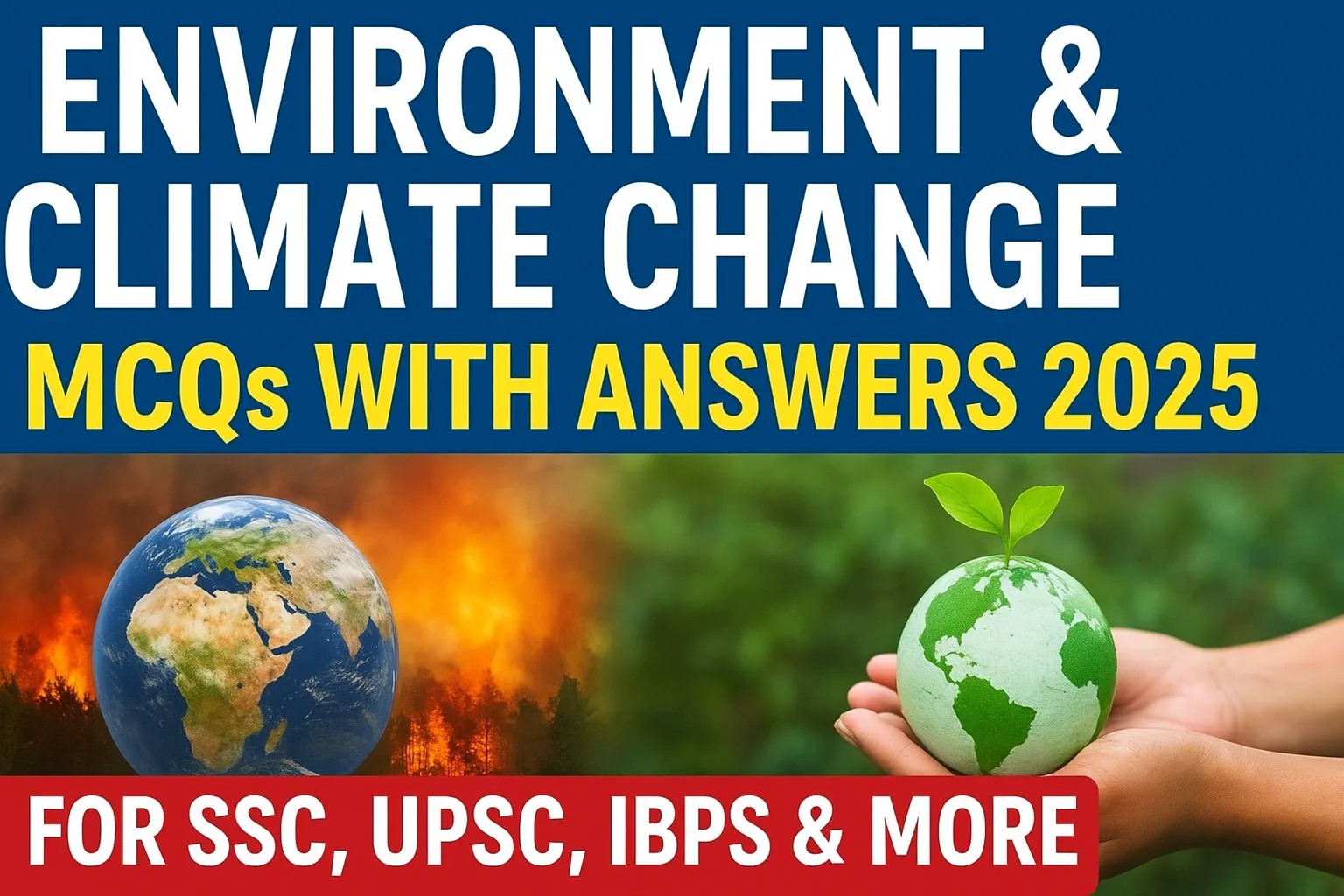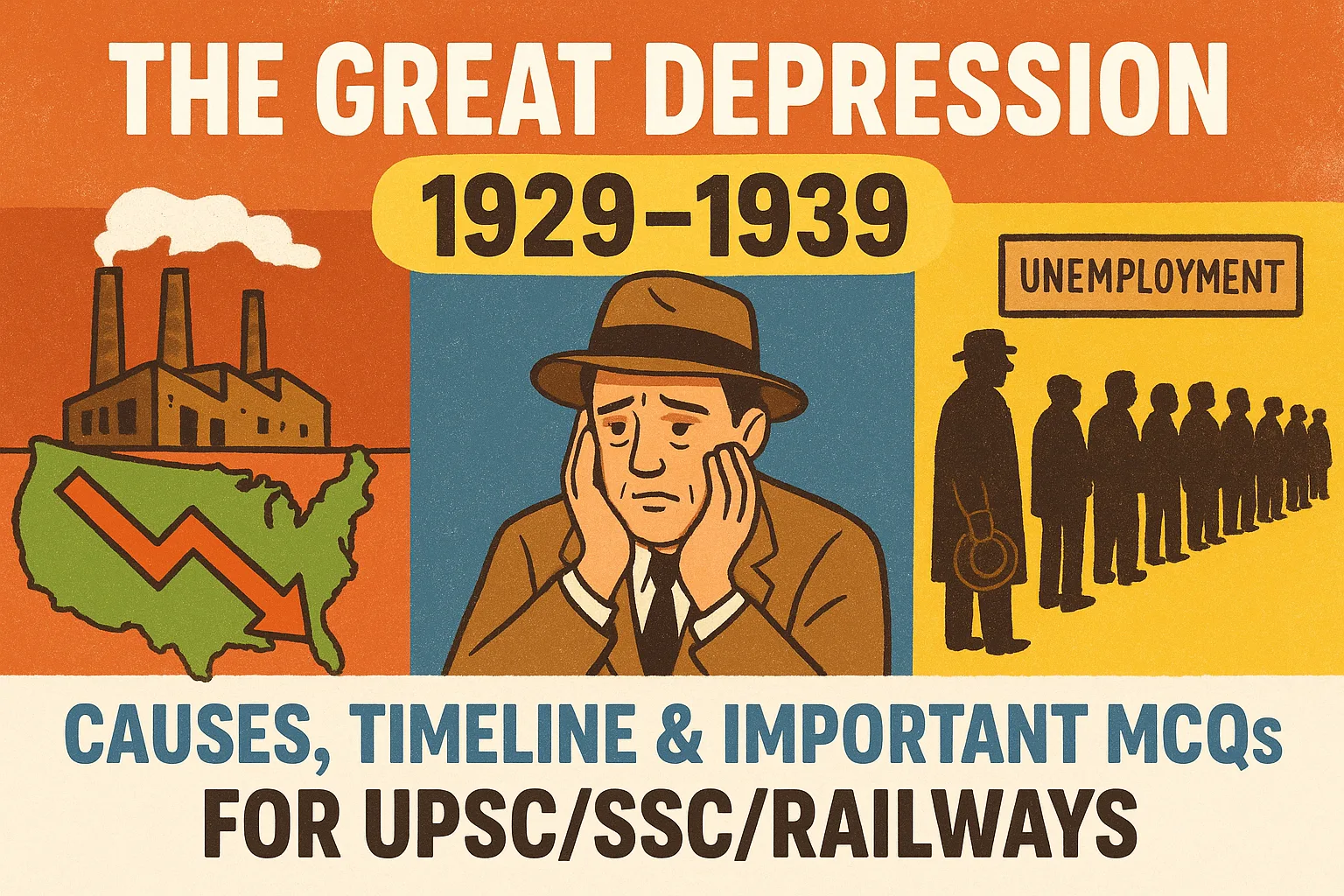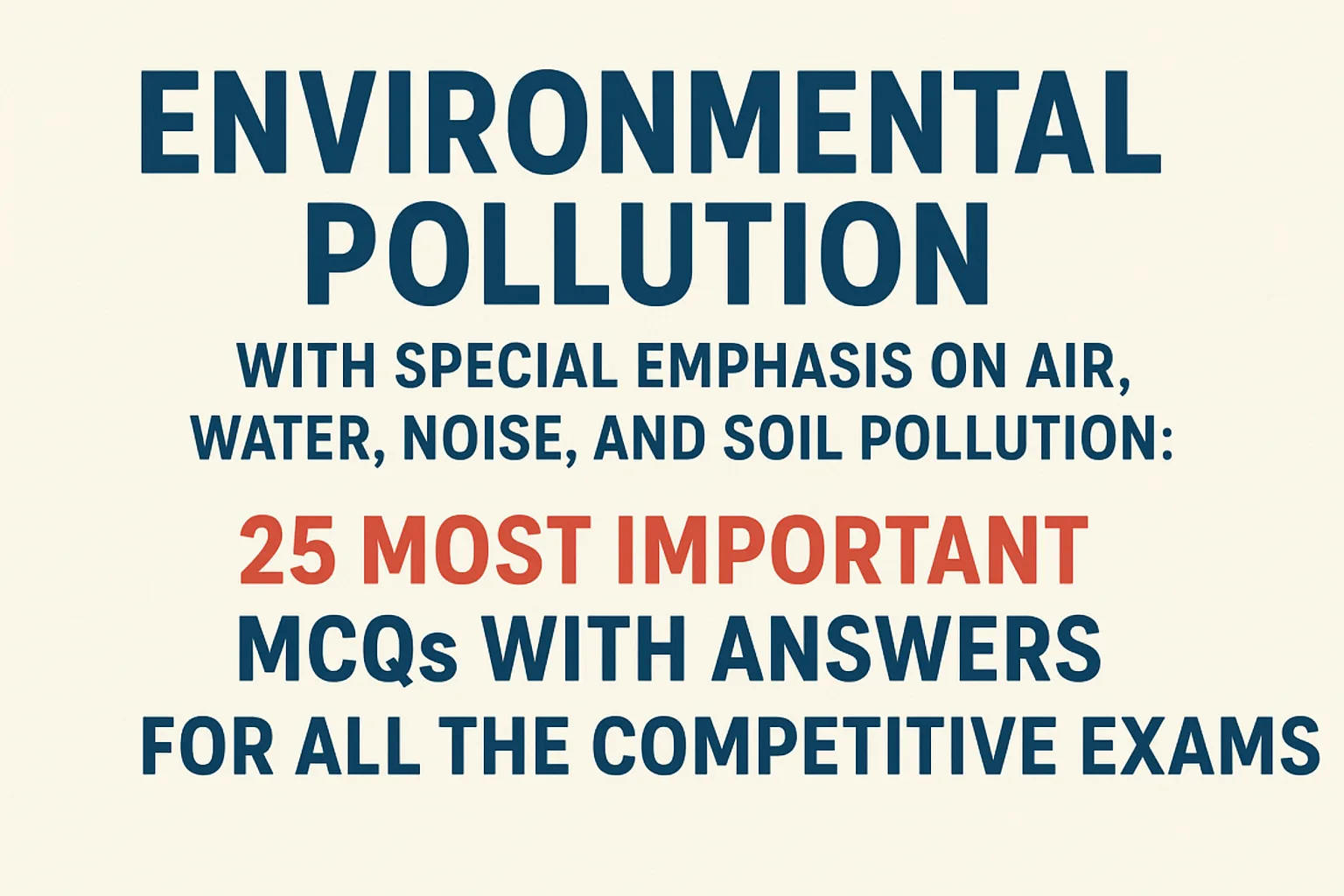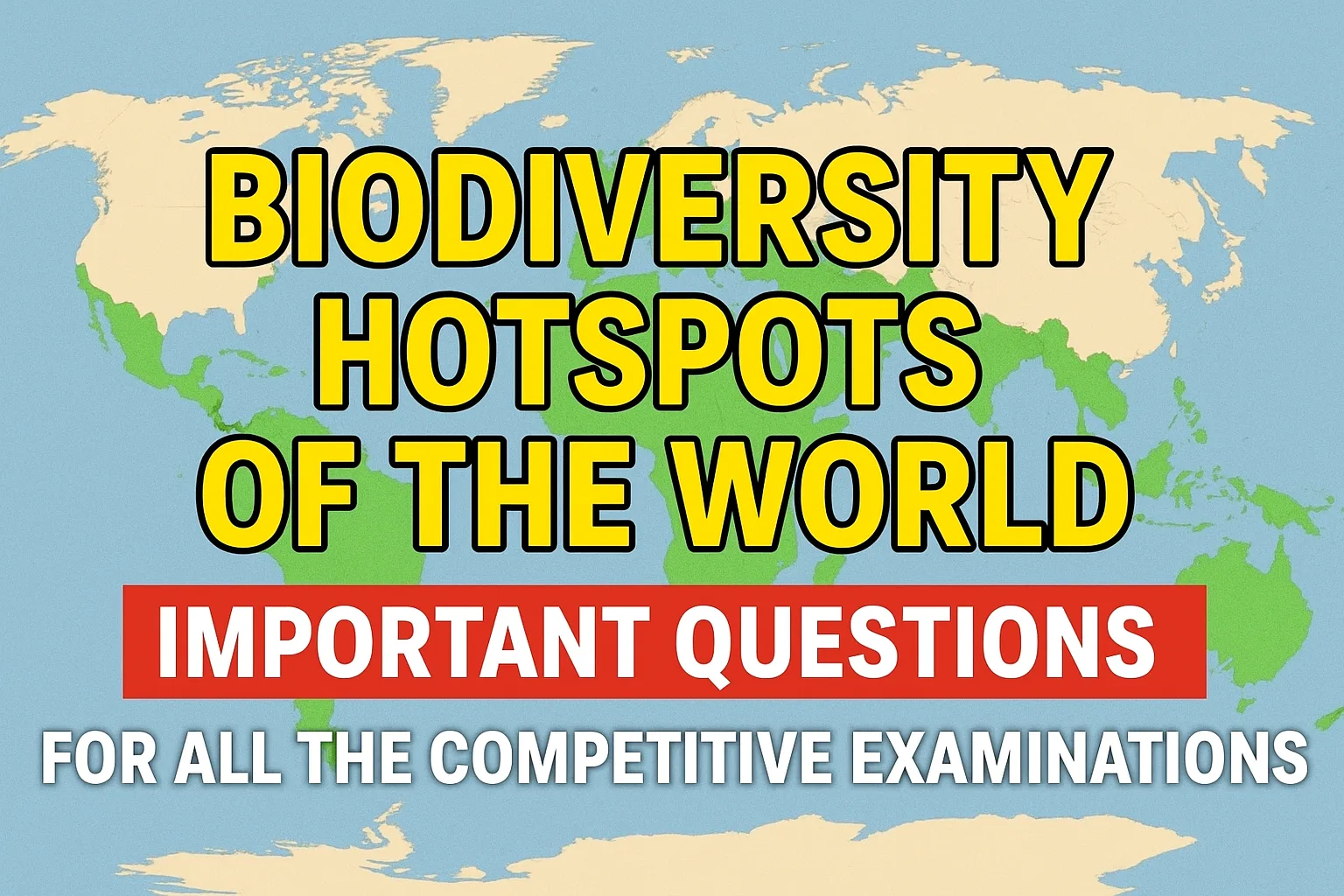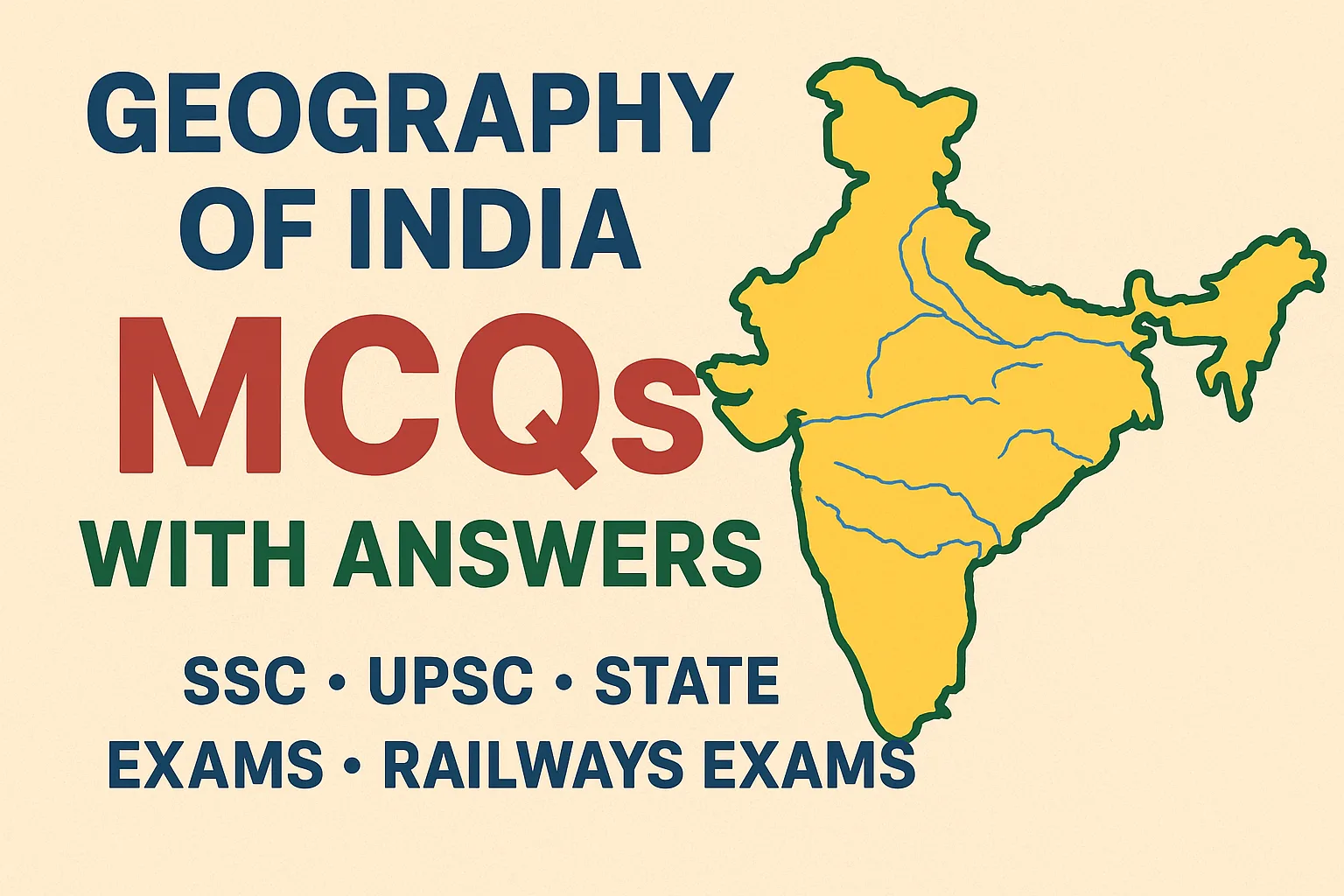The environment and climate change are one of the most talked about issues of the 21st century in the world. It has its effects across the ecosystems, economies, and human societies. Rising temperatures, altering rainfall patterns, droughts, floods, and melting glaciers are becoming everyday realities that are affecting thousands of lives worldwide every year. From the competitive exam point of view, examinations conducted by SSC, UPSC, IBPS, and JKSSB, the topic of environmental change has become one of the most buzzed-about topics. These MCQs have been prepared using very high-level research and authentic articles and sources to keep you updated and keep you secure with the information provided. Food security, health, and livelihood are largely affected by the issue of the environment and climate change. These 25 MCQs will not only prove as a good source of testing your knowledge but will also serve as a boon for last-minute revisions.
Q1. Climate change is described as long-term shifts in temperature, rainfall, wind patterns, and other aspects of Earth’s system, but which of the following is considered the most vulnerable due to rising sea levels?
A) Mountain regions
B) Island nations like Tuvalu, Kiribati, and the Maldives
C) Inland desert areas
D) Polar research stations
Correct Answer: B) Island nations like Tuvalu, Kiribati, and the Maldives
Q2. Which natural phenomenon in 1991 caused a global temperature drop of about 0.5°C for some years by releasing massive amounts of sulfur dioxide into the atmosphere?
A) Krakatoa eruption
B) Mount Pinatubo eruption in the Philippines
C) Mount Fuji eruption in Japan
D) Mount Vesuvius eruption in Italy
Correct Answer: B) Mount Pinatubo eruption in the Philippines
Q3. The Maunder Minimum during the 17th century is an example of reduced solar activity that led to cooler global temperatures, but what is the general effect of high sunspot activity on Earth?
A) It reduces sunlight reaching Earth and causes cooling
B) It increases sunlight and leads to warming
C) It causes volcanic eruptions to increase
D) It strengthens ocean currents permanently
Correct Answer: B) It increases sunlight and leads to warming
Q4. Over geological time, tectonic plate movements like the uplift of the Himalayas influenced both the South Asian monsoon and climate patterns worldwide, but what long-term climate transition can they cause?
A) Transition from greenhouse Earth to icehouse Earth
B) Transition from icehouse Earth to desert Earth
C) Transition from tropical Earth to volcanic Earth
D) Transition from frozen Earth to hot desert Earth
Correct Answer: A) Transition from greenhouse Earth to icehouse Earth
Q5. Milankovitch cycles describe how Earth’s orbital changes and axial tilt influence glacial and interglacial periods, but what factor do they mainly affect?
A) Distribution of sunlight across the planet
B) Formation of new tectonic plates
C) Direction of volcanic eruptions
D) Location of deserts and forests
Correct Answer: A) Distribution of sunlight across the planet
Q6. Fossil fuels like coal, oil, and gas are responsible for more than 75% of global greenhouse gas emissions, but what percentage of global carbon dioxide emissions do they alone account for?
A) Nearly 50%
B) About 70%
C) Nearly 90%
D) Around 25%
Correct Answer: C) Nearly 90%
Q7. Residential and commercial buildings consume over half of the world’s electricity, but their main contribution to greenhouse gas emissions comes from using which energy sources for heating and cooling?
A) Only renewable sources
B) Coal, oil, and natural gas
C) Wind and hydropower
D) Solar and biomass energy
Correct Answer: B) Coal, oil, and natural gas
Q8. Road transportation forms the majority of transport emissions, but according to estimates, what proportion of the world’s transport energy still comes from fossil fuels?
A) About 75%
B) Around 50%
C) About 95%
D) Nearly 30%
Correct Answer: C) About 95%
Q9. Each year, around 12 million hectares of forests are destroyed, releasing stored carbon into the atmosphere, but what shift has already happened to some tropical forests like the southeastern Amazon?
A) They are now absorbing more carbon
B) They have turned into carbon sources instead of sinks
C) They stopped producing oxygen
D) They became free from human activity
Correct Answer: B) They have turned into carbon sources instead of sinks
Q10. The wealthiest 1% of the global population are responsible for emitting more greenhouse gases than the poorest 50%, but what does this mainly highlight in terms of climate change?
A) Equal responsibility of all citizens
B) The role of lifestyle choices and inequality
C) The benefits of industrialization for poor nations
D) Poorer countries cause more deforestation
Correct Answer: B) The role of lifestyle choices and inequality
Q11. India’s hottest August and September on record happened in 2023, but which year marked India’s 5th warmest annual mean temperature since 1901 at +0.44°C above the average?
A) 2010
B) 2021
C) 2017
D) 2015
Correct Answer: B) 2021
Q12. Warmer conditions increase moisture evaporation, leading to extreme rainfall, flooding, and more destructive cyclones, but which country has witnessed a 57% expansion in drought-prone areas since 1997?
A) China
B) Brazil
C) India
D) Indonesia
Correct Answer: C) India
Q13. Since 1900, the global average sea level has risen by approximately 21 centimeters, but which ecosystems are most threatened due to rising acidity and heating of oceans?
A) Grasslands and deserts
B) Marine ecosystems and coral reefs
C) Mountain glaciers
D) Urban forests
Correct Answer: B) Marine ecosystems and coral reefs
Q14. Climate change is causing species extinction at rates 1,000 times higher than historical norms, but in India, which ecosystem covering about 5,790 sq km faces serious threats?
A) Himalayan glaciers
B) Coral reefs
C) Desert vegetation
D) Mangroves
Correct Answer: B) Coral reefs
Q15. A World Bank study found that rice yields in India have fallen by around 6% due to climate change, but which two sectors are most affected by these climatic shifts?
A) Agriculture and fisheries
B) Mining and construction
C) Banking and education
D) Tourism and entertainment
Correct Answer: A) Agriculture and fisheries
Q16. According to global health studies, around 13 million deaths occur annually due to environmental factors linked with climate change, but which disease is also expected to spread further due to rising temperatures?
A) Tuberculosis
B) Malaria
C) Cancer
D) Asthma
Correct Answer: B) Malaria
Q17. An average of 23.1 million people are displaced annually due to climate-related disasters, but according to a report, which country ranks as the fourth worst-hit by climate change-induced migration?
A) Bangladesh
B) India
C) Philippines
D) Nigeria
Correct Answer: B) India
Q18. The Rio Earth Summit of 1992 is famous for signing the UNFCCC, but what three pillars of sustainable development were formally introduced during this global summit?
A) Health, Education, Security
B) Economic, Social, Environmental
C) Political, Military, Trade
D) Scientific, Technological, Agricultural
Correct Answer: B) Economic, Social, Environmental
Q19. The Kyoto Protocol follows the principle of “common but differentiated responsibilities,” but which group of nations was expected to lead emissions reduction efforts under this protocol?
A) Developing nations
B) Least developed nations
C) Developed industrialized nations
D) Island nations
Correct Answer: C) Developed industrialized nations
Q20. At COP 16 in Cancun, the Green Climate Fund was created to support developing nations, but what was its annual funding target by 2020?
A) USD 10 billion
B) USD 50 billion
C) USD 100 billion
D) USD 200 billion
Correct Answer: C) USD 100 billion
Q21. The Paris Agreement of 2015 aims to limit global warming to “well below” 2°C, but what more ambitious temperature limit was also included in the agreement?
A) 1.8°C
B) 1.5°C
C) 1.2°C
D) 1.0°C
Correct Answer: B) 1.5°C
Q22. Under REDD+ solutions adopted at COP 19, countries agreed to not just reduce deforestation but also to conserve and enhance which specific natural stocks?
A) Water stocks
B) Forest carbon stocks
C) Fish stocks
D) Soil stocks
Correct Answer: B) Forest carbon stocks
Q23. India pledged net-zero carbon emissions by 2070 during COP26, but what is the approximate population size of India that makes this pledge globally significant?
A) 900 million
B) 1.4 billion
C) 2 billion
D) 750 million
Correct Answer: B) 1.4 billion
Q24. The Panchamitra climate action plan includes five goals, one of which is sourcing 50% of energy requirements from renewable sources by 2030, but how much non-fossil energy capacity is India targeting by then?
A) 300 GW
B) 400 GW
C) 500 GW
D) 600 GW
Correct Answer: C) 500 GW
Q25. India’s renewable energy capacity has risen from 76.38 GW in 2014 to 203.1 GW in 2024, but in the global ranking, where does India currently stand in renewable energy capacity?
A) First
B) Second
C) Third
D) Fourth
Correct Answer: D) Fourth
Conclusion
Studying this topic will not only increase the general awareness and keep the person in connection and sync with their day-to-day world, but also help the candidate to understand the global treaties, climate policies, and sustainable development goals.
